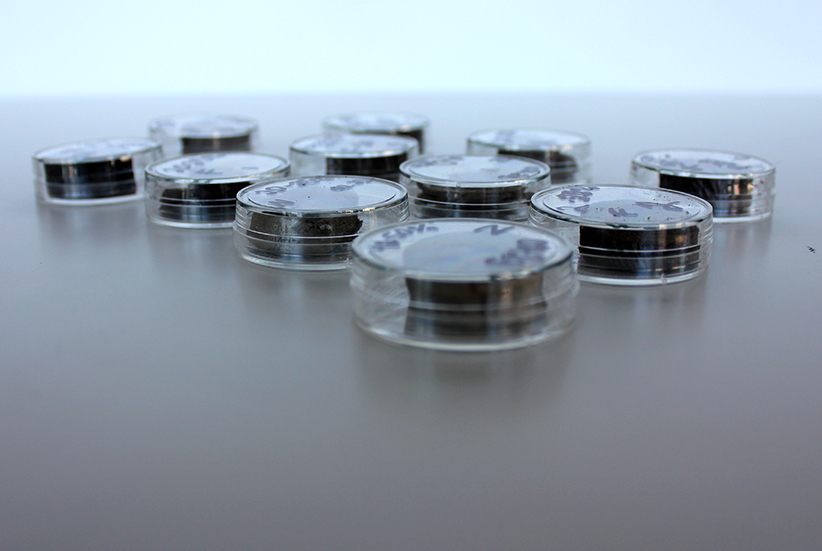Sustainable co-creation of reactive graphene oxide structures in
a transdisciplinary approach to materials science and design
Research Team
Dr. Marta Cerutti
Dr. Alice Jarry
Dr. Yiwen Chen
Jacqueline Beaumont
Philippe Vandal
Nima Zakeri
Funding
FRQ-Audace
Dr. Marta Cerutti
Dr. Alice Jarry
Dr. Yiwen Chen
Jacqueline Beaumont
Philippe Vandal
Nima Zakeri
Funding
FRQ-Audace



GO structures and membranes, SEM views and lasercuts. Biointerface Lab, McGill University. Photo: Alice Jarry
This project brings together scientists and artists to build responsive membranes and structures made of Graphene oxide (GO). The team explores how to make the material to change configuration upon an external stimulus (light, pH, ion concentration, etc).
Already, the creation of responsive GO-based structures is a new concept from a scientific perspective.
The integration within art and design furthers the exploration from the nano to the macro scale, and apply them as part of technologies for the environment and health, and the built environment.
Examples of future scientific applications include responsive, biodegradable GO capsules responsive to pH changes for soil decontamination; selective ion sensors; and microscopic neural networks where GO capsules act as protocells exchanging chemical information prompted by their surroundings.
Already, the creation of responsive GO-based structures is a new concept from a scientific perspective.
The integration within art and design furthers the exploration from the nano to the macro scale, and apply them as part of technologies for the environment and health, and the built environment.
Examples of future scientific applications include responsive, biodegradable GO capsules responsive to pH changes for soil decontamination; selective ion sensors; and microscopic neural networks where GO capsules act as protocells exchanging chemical information prompted by their surroundings.
Applications in the arts and built environment include responsive skins for buildings and the body and interactive installations.
The research addresses both at a fundamental and a practical level crucial questions at the core of current research in materials science and design:
· Up to what point can materials mimic nature and become ‘alive’, changing themselves based on external stimuli?
· What happens when materials and humans interact?
· Can the interaction between materials and the environment help improve our own environment, through responsive sensors, filters, etc?
· Can the materials we surround ourselves with be made sustainably?
The research addresses both at a fundamental and a practical level crucial questions at the core of current research in materials science and design:
· Up to what point can materials mimic nature and become ‘alive’, changing themselves based on external stimuli?
· What happens when materials and humans interact?
· Can the interaction between materials and the environment help improve our own environment, through responsive sensors, filters, etc?
· Can the materials we surround ourselves with be made sustainably?

Folding experiments toward responsive GO structures by Philippe Vandal and Jacqui Beaumont. Photo: Alice Jarry


